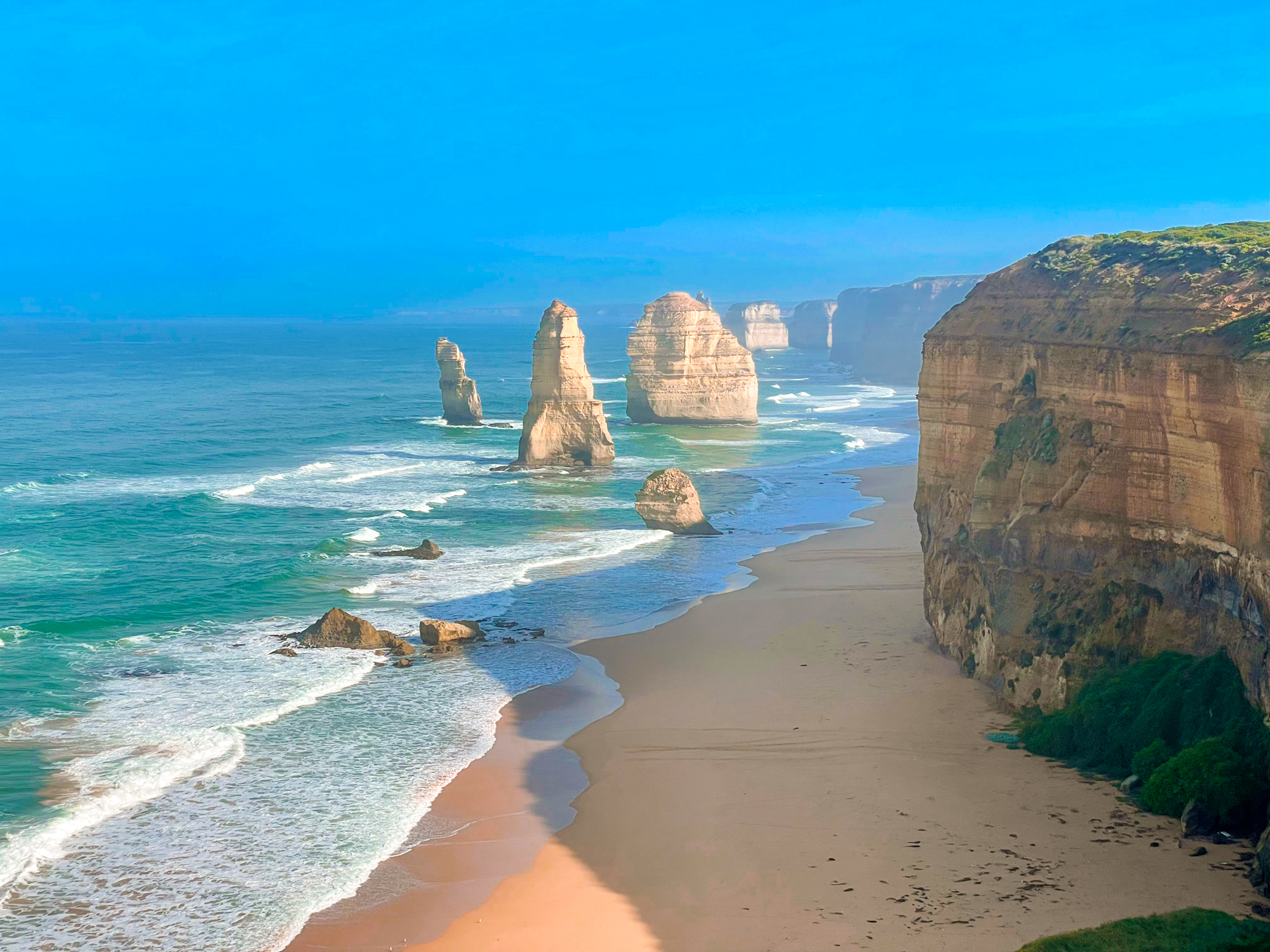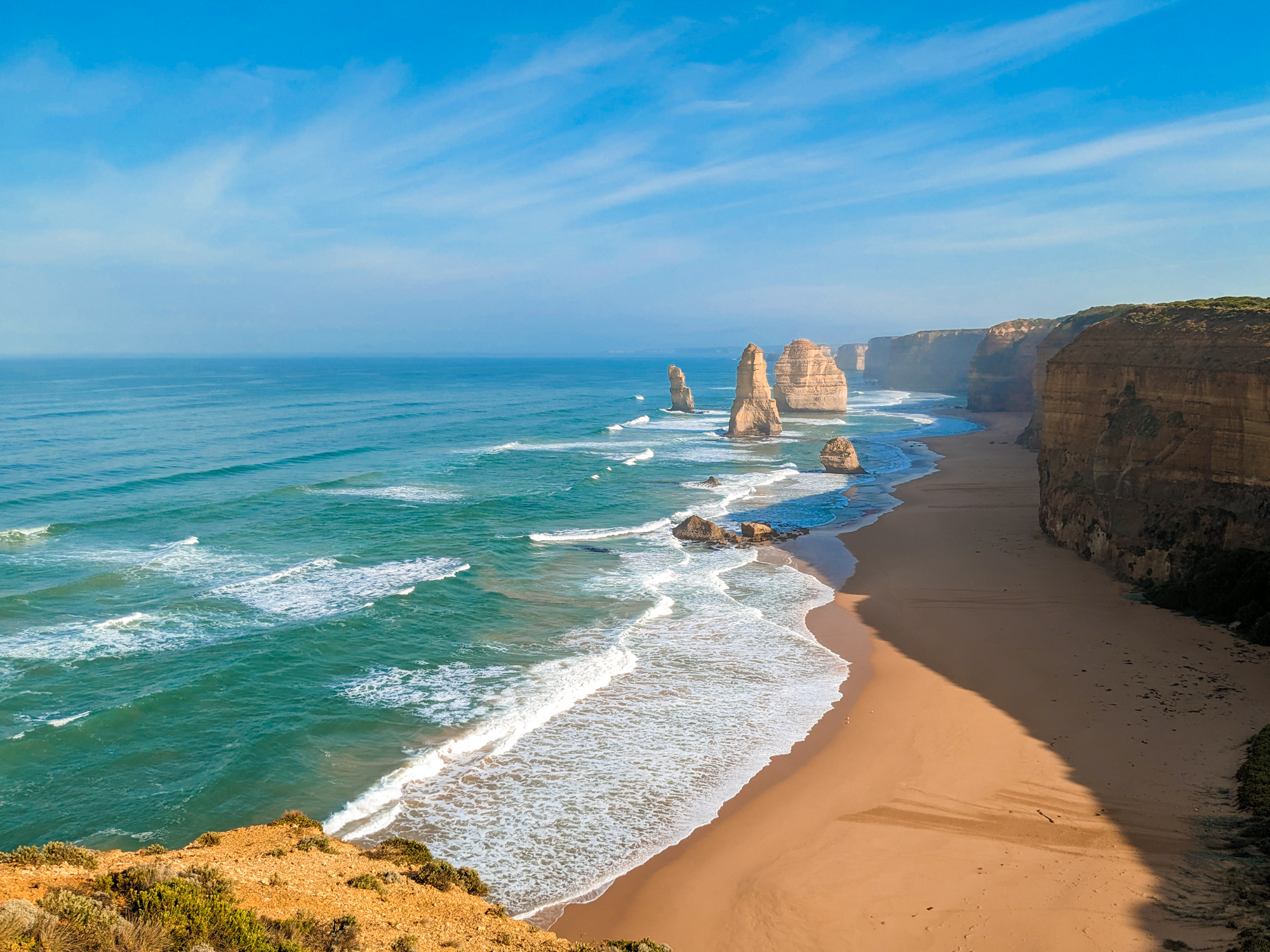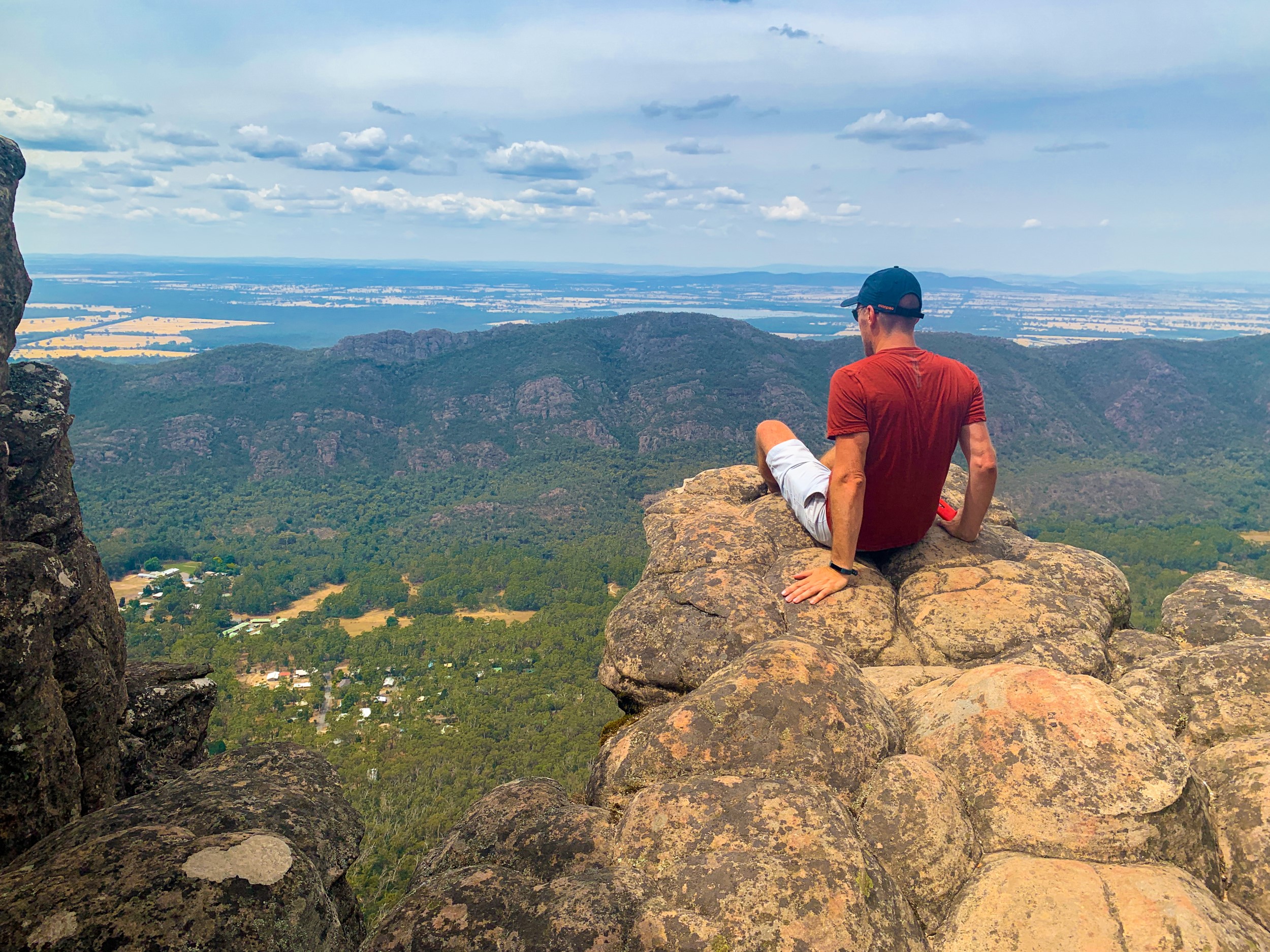The Great Ocean Road is one of the best scenic drives in the world.
Encompassing the coastline between Torquay and Allansford, this 240 kilometre (150 mile) stretch of road will take you to some of the best beaches and viewpoints in Victoria. Along the way, you’ll uncover surf meccas, bustling wineries, pristine beaches, lush rainforest, rugged cliffs, and wonderful coastal towns — plus, of course, the famous Twelve Apostles.
Dave and I live in Melbourne, so have jumped on countless road trips along the Great Ocean Road over the years, whether it was to get out of the city for a week or to head out on a day trip to clear our minds. We’re blessed to have visited at every time of year and with various family members and friends — each of whom was looking to focus on something different on their road trip.
In other words, we know this drive like the back of our hands and love taking visitors out to experience the most iconic of Aussie road trips.
Today, then, we’re excited to share absolutely everything you could possibly need to know about driving the Great Ocean Road.
Let’s get started.
The History of the Great Ocean Road

You’ve probably heard of the Great Ocean Road before, simply because it’s regularly voted one of the best places to road trip in the world. But what a lot of people don’t know is that the Great Ocean Road is also the world’s longest war memorial.
The idea for the Great Ocean Road was first conceptualised around the time of the First World War. Back then, this part of Victoria was far from accessible. In fact, your two options for exploring it were to either arrive on the beaches by boat or to hike for days through the bush.
Given the beauty of this part of the state, building a road felt like a logical step that would help attract tourists to the region. But not only that: at the time, there were thousands of servicemen that were now returning from the war and in need of employment. By twinning the two together, the ambitious project was set in motion. Three thousand returned soldiers toiled on the road, driven by the awareness that after it was finished, it would be declared a memorial to their friends who had fallen in the war.
Work started in 1919 and was completed 13 years later in 1932 — but the route was still far from the scenic drive we know and love today. For starters, it was dangerous. The road was rocky, uneven, and only wide enough to fit one vehicle — with few options for pulling over to let others pass. Throw in winding paths up on towering clifftops and driving this route was a nail-biting experience for those who braved its twists and turns.
But with time comes progress, and little by little, the road was widened, paved, and improved, and bustling towns sprung up around the most scenic parts of the drive.
Today, the Great Ocean Road is driven by over six million people each and every year and tops the bucket lists of Australians and tourists alike. Let’s now take a look at how you can make the most of your time on this country’s most beloved road trip.
How Long Does it Take to Drive the Great Ocean Road?

The Great Ocean Road isn’t a vast road trip: with a distance of 240 kilometres, or 150 miles, you could drive the full length of it in as little as four hours. Most people, however, usually stop and turn around at the Twelve Apostles (there’s not an awful lot to see between them and the end point of Allansford) — that’s a three hour drive.
In other words, you could totally drive from Melbourne to the Twelve Apostles and back in one action-packed day. Dave and I have done this several times and always had a fantastic time while doing so. So yes, you can do the Great Ocean Road in one day.
However.
For me, personally, I think that two days is the perfect length of time — spending the night in Port Campbell, near to the Twelve Apostles. The main reason for this is because it allows you to see the Twelve Apostles at their best. When you’re hitting up the Great Ocean Road on a day trip, it usually means that you’ll reach these limestone towers in the middle of the afternoon.
And that is the absolute worst time of day to be there. See: Exhibit A below.

If you choose to spend the night at Port Campbell, however, you’ll be able to see the Twelve Apostles at sunset:

And then in the early morning, where you’re likely to be sharing the viewing platforms with fewer than a dozen other people.

Given that most people drive the Great Ocean Road to see the Twelve Apostles, it makes sense to take that extra time in order to see them at their best. Both sunset and sunrise are truly magical times of day to be there; mid-afternoon is mostly just chaotic.
Spending two days on the Great Ocean Road will allow you to see far more attractions along the road and take your time while doing so. You’ll be able to justify lingering over a lengthy lunch at a winery, signing up for surf lessons in Torquay, hiking to a waterfall in Cape Otway National Park, or even going platypus-spotting on Lake Elizabeth.
With three, four, or even five days, you’ll be able to fill your boots with dozens of activities, throwing into the mix adventures like taking the infamous kangaroo-watching tour at Anglesea Golf Club, wandering the Kennett River Koala Walk, visiting the Californian Redwoods grove, or jumping on a whale-watching cruise from Warrnambool.
What’s the Best Way to See the Great Ocean Road?

I’ll have to be honest here: the best way to see the Great Ocean Road is to drive it yourself. The driving is easy and smooth; there’s a few winding parts but nothing too difficult. If you’re not used to driving on the left-hand side of the road, you shouldn’t find it any trickier to do here than anywhere else in Australia.
I am, however, mindful that not everybody knows how to drive.
Is it possible to take public transport along the Great Ocean Road?
It is… but it’s not particularly easy and it does mean that if you decide to hop off the bus to check out a beach, you’d need to wait an hour or two for the next one to come along. Still, there are regular trains from Southern Cross train station in Melbourne to Geelong, and from there, you can take a bus that stops regularly along the route — including the Twelve Apostles. The full timetable is available on the PTV website.
If you’re willing to spend a little bit of money, you could opt for a tour for the Great Ocean Road. The best-rated tour is priced at $130 per person and lasts for just under 14 hours, and includes koala-spotting, watching the surfers at Bells Beach, snapping a photo under Memorial Arch, hitting up the famous Twelve Apostles, and finishing it off with a visit to the impressive Loch Ard Gorge.
I’ll now briefly breakdown my absolute favourite things to do along the Great Ocean Road — the things that you shouldn’t miss, whether you’re going to be there or one day or 10.
The Best Things to Do on the Great Ocean Road

Brunch and beaches in Torquay: Torquay is our favourite town on the Great Ocean Road, no questions asked. Pond Cafe serves up the best brunches on the entire trip (Mikro Coffee Roasters has the best coffee, in case you were wondering) and makes for a good first stop after leaving from Melbourne. Check out the beautiful sundial beside the water and wander beside Front Beach; if you’re in need of a new fit, head to Surf Plaza for its many outlet stores; I love the Rip Curl one.
Watch the surfers in Bells Beach: Bells Beach is a world-renowned surf spot, famous for its large swells and perfect right-handers, some of which reach as high as five metres when the conditions are right. It’s home to the Rip Curl Pro surf competition, which takes place every Easter, but there’s still plenty to see outside of this peak time of year. It’s a beautiful spot, so do take the time to watch the surfers from the viewpoint overlooking the waves.
Snap a photo beneath Memorial Arch: This is the place to have your photo taken on the Great Ocean Road. The wooden arch & statue commemorate the soldiers who built the road by hand, and makes for a scenic spot to stand beneath. Just be sure to watch out for traffic!
Hit up the famous lighthouse in Aireys Inlet: Have you ever… ever felt like this? When strange things happen, are you going ’round the twist? If you’re a 90s kid like me, you’ll have likely spent your childhood singing the theme tune to Round the Twist, the Australian children’s comedy show about a supernatural family. And the opening credits to the show? They featured the lighthouse at Aireys Inlet! Whether you were a fan of the show or not, the structure is a real beauty; well-worth a stop to have a look around.
Tackle the Kennett River Koala Walk: Kennett River is a teeny-tiny settlement, with little more than a general store and a thousand koalas. Yes, this is the place to be if you’re keen to spot our native marsupials in the wild. If you’re lucky you’ll be able to spot a couple of them at the start of the trail, saving you time. If not, the track runs for 15 kilometres into the bush; you’d spot dozens if you walked the entire thing.
See the Twelve Apostles: Of course, if you do just one thing on the Great Ocean Road, it has to be seeing the Twelve Apostles! These towering limestone stacks are forever impressive, rising up out of the ocean and just demanding to be photographed. You could spend an hour here, just walking around and taking photos, as every angle provides an impressive viewpoint.
Where to Go After the Great Ocean Road?

Now, there’s nothing stopping you from turning around once you get to the end and driving back to Melbourne the way you came. You undoubtedly skipped over activities and viewpoints on the way, so it makes sense to add them in on the way back.
If, however, you’re planning on a greater road trip around Victoria or are keen to get back to Melbourne as quickly as possible, you have a few options open to you.
- One of my favourite road trips of the past few years involved driving the Great Ocean Road from Melbourne to Port Fairy, then continuing on to Halls Gap, in the Grampians, to get my hike on. Dave and I love the Grampians and it’s one of our favourite places in the state to get out into nature.
- Continue onwards, past Allansford, to Warrnambool, where if the time is right (June to September) you can go whale-watching! Beyond that, you can continue driving west until you reach Adelaide.
- If you’re in a rush, you can take the inland route back to Melbourne, cutting out a couple of hours of driving time by doing so.
All images copyright Everything Victoria, except the header image, which is copyright pisaphotography/Shutterstock
